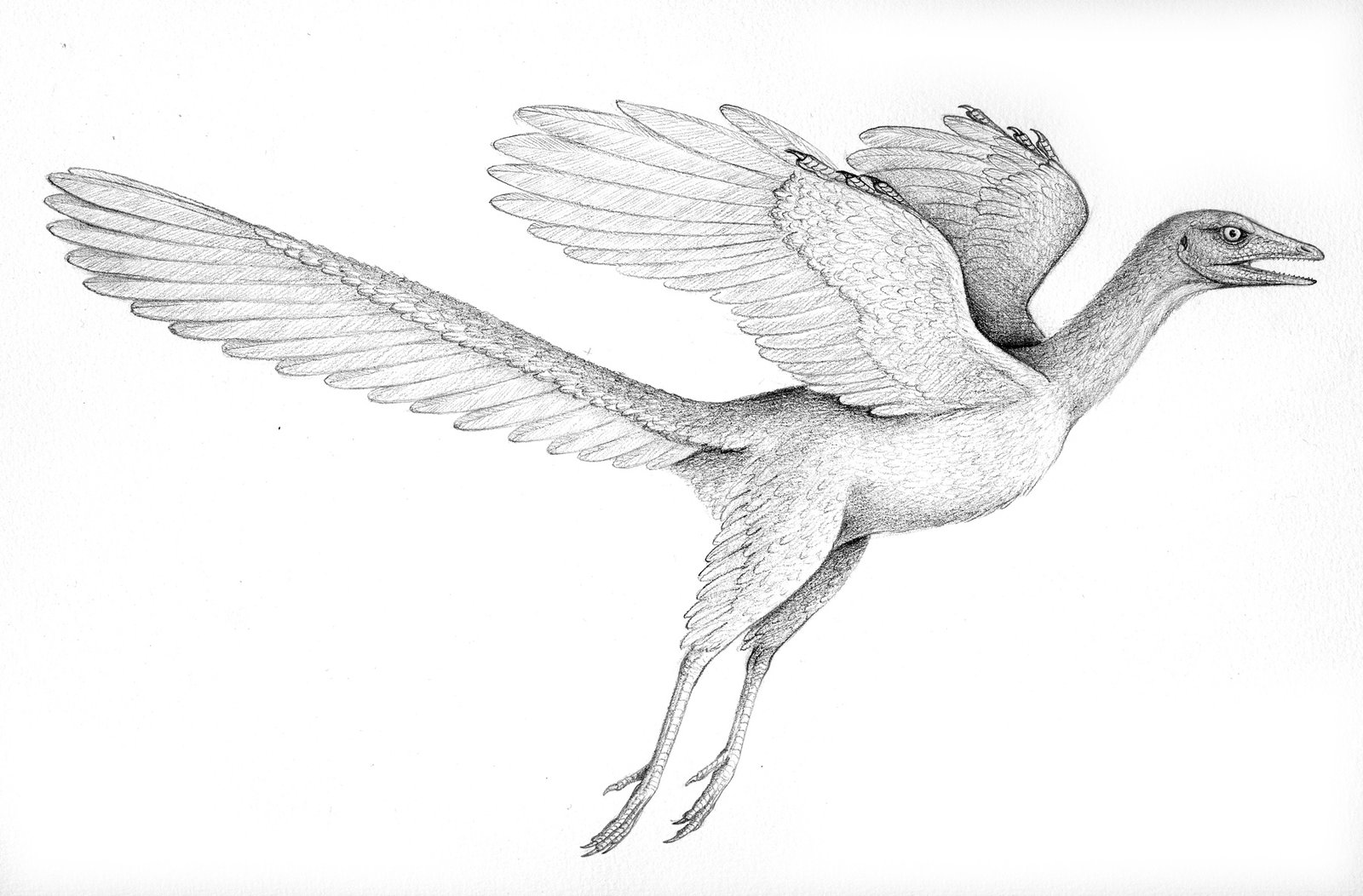Bird-like dinosaurs
Many of the characteristics of early and modern birds appeared first in theropod dinosaurs. Feathers, wishbones, modified "flapping" forelimbs and hollow bones are found in the coelurosaurs.


© Australian Museum
Coelurosaurs are the theropod group that includes tyrannosaurs and dromaeosaurs.
The latter group includes such members as Bambiraptor and Velociraptor, which share a more recent common ancestor with birds. Considering who came first, perhaps we should stop describing dinosaurs as having bird-like behaviour and start thinking of birds as behaving like dinosaurs.
The fossilised skeleton of Mei long, a non-avian coelurosaur from China, was preserved with its head ‘tucked’ under its forelimb. This posture resembles the ‘sleeping’ pose commonly used by modern birds. Such inferred behaviour strengthens the link between non-avian dinosaurs and birds.
Examples of bird-like dinosaurs include:
- Caudipteryx zoui. Fossils from China, Early Cretaceous, 130–122 million years ago. Classification: Theropoda; Oviraptorosauria. Caudipteryx means ‘tail feather’, referring to the tail plume that this non-avian dinosaur possessed, and may have fanned out for display. The rest of the body was covered in short primitive feathers with longer feathers on its arms and tail.
- Sinosauropteryx prima. Fossils from China, Early Cretaceous, 130–122 million years ago. Classification: Theropoda; Compsognathidae. The discovery of Sinosauropteryx prima in 1996 was one of the most important fossil finds of the century. It was the first non-avian dinosaur found with feather-like structures, providing further evidence for the link between dinosaurs and birds. The shape of melanosomes (tiny pigment packages in cells) in its feathers suggests it had a ginger body and white and ginger stripes on its tail. Its name means ‘first Chinese reptilian wing’.
- Sinornithosaurus millenii. Fossils from China, Early Cretaceous, 130-122 million years ago. Classification: Theropoda; Dromaeosauridae. Sinornithosaurus may have been adapted for leaping. Its rigid tail acted as a counterbalance, allowing pinpoint accuracy and freeing the powerful feet claws. Whether this helped in attacking prey or leaping among tree branches is difficult to say. Sinornithosaurus was one of the first dinosaurs discovered with feathers.

Archaeopteryx lithographica fossil cast. Discovered in the 1860s, Archaeopteryx was the first fossil evidence linking birds to dinosaurs. It had feathers like modern birds and a skeleton with features like a small non-avian dinosaur. Although it is the earliest and most primitive bird known to date, it is not considered the common ancestor of all birds.
Image: Carl Bento© Australian Museum
The earliest-known feathered dinosaurs
Although it is widely accepted that a small group of theropod dinosaurs gave rise to birds, finding feathered dinosaurs in the fossil record that predate the earliest known bird Archaeopteryx (150myo) has proven elusive. That was until Anchiornis huxleyi was announced in 2009. This species, found in China, dates to between 161-151 million years old and has well-developed feathers on all four limbs. Quick on its heels was the announcement of another stunning new feathered dinosaur Haplocheirus sollers, also from China and about 160 million years old. Haplocheirus is a type of alvarezsauriod, a group of dinosaurs once thought to be flightless birds, but lacks the bird-like features found in later alvarezsauriods such as fused wrist bones and a backward-facing pubis.
The dinosaur–bird transition
Modern birds, early birds and coelurosaur dinosaurs share many physical features:
- feathers
- hollow and thin-walled bones
- wishbone
- modified shoulder and forelimb enabling hands to fold against the lower arm
- modified wrist (semilunate carpal).

Archaeopteryx lithographica illustration based on skeletal reconstruction of fossils from Germany. Late Jurassic, 155-150 million years ago.
Image: Dr Anne Musser© Australian Museum

